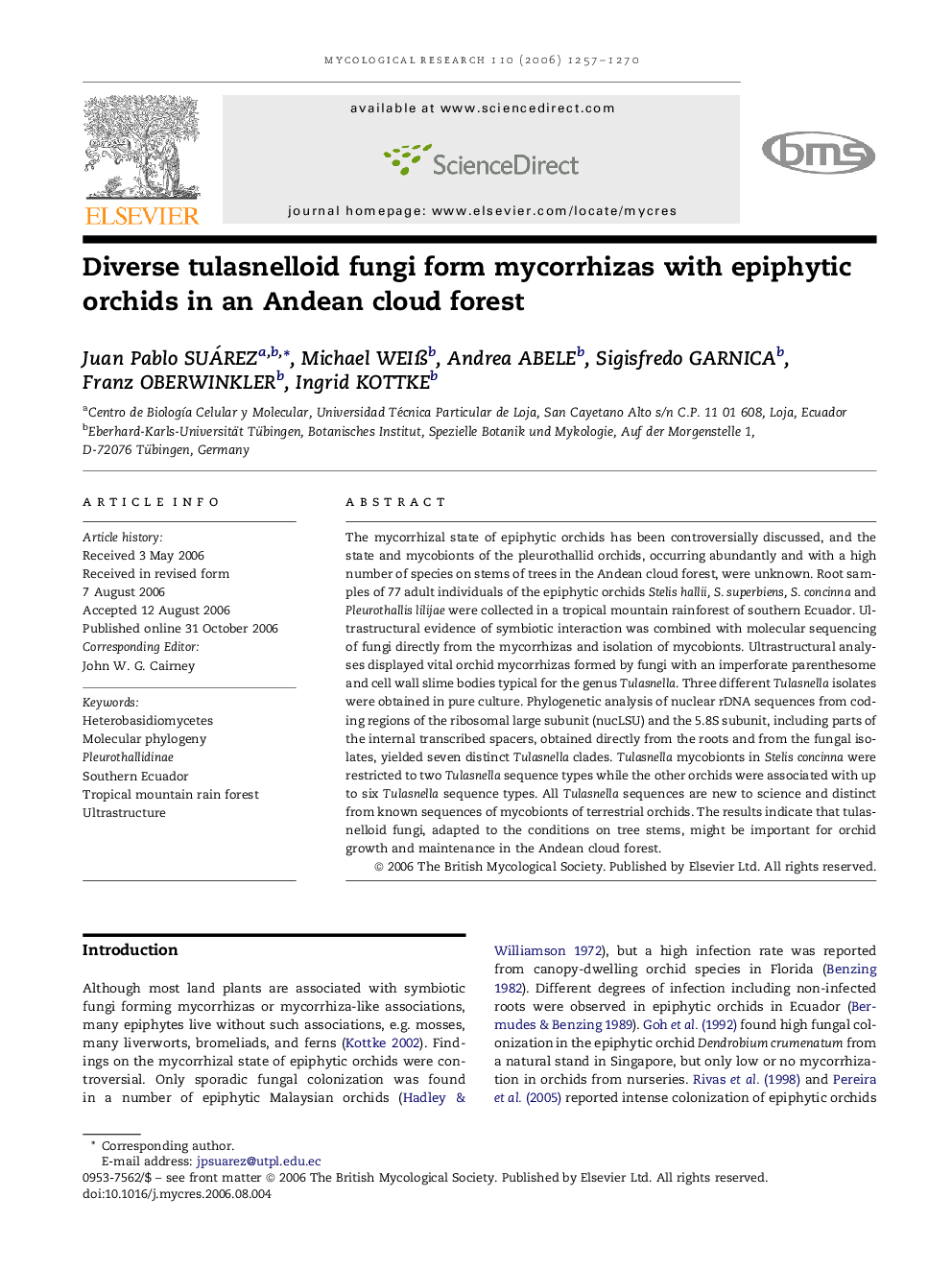| Article ID | Journal | Published Year | Pages | File Type |
|---|---|---|---|---|
| 4358055 | Mycological Research | 2006 | 14 Pages |
Abstract
The mycorrhizal state of epiphytic orchids has been controversially discussed, and the state and mycobionts of the pleurothallid orchids, occurring abundantly and with a high number of species on stems of trees in the Andean cloud forest, were unknown. Root samples of 77 adult individuals of the epiphytic orchids Stelis hallii, S. superbiens, S. concinna and Pleurothallis lilijae were collected in a tropical mountain rainforest of southern Ecuador. Ultrastructural evidence of symbiotic interaction was combined with molecular sequencing of fungi directly from the mycorrhizas and isolation of mycobionts. Ultrastructural analyses displayed vital orchid mycorrhizas formed by fungi with an imperforate parenthesome and cell wall slime bodies typical for the genus Tulasnella. Three different Tulasnella isolates were obtained in pure culture. Phylogenetic analysis of nuclear rDNA sequences from coding regions of the ribosomal large subunit (nucLSU) and the 5.8S subunit, including parts of the internal transcribed spacers, obtained directly from the roots and from the fungal isolates, yielded seven distinct Tulasnella clades. Tulasnella mycobionts in Stelis concinna were restricted to two Tulasnella sequence types while the other orchids were associated with up to six Tulasnella sequence types. All Tulasnella sequences are new to science and distinct from known sequences of mycobionts of terrestrial orchids. The results indicate that tulasnelloid fungi, adapted to the conditions on tree stems, might be important for orchid growth and maintenance in the Andean cloud forest.
Related Topics
Life Sciences
Agricultural and Biological Sciences
Agricultural and Biological Sciences (General)
Authors
Juan Pablo Suárez, Michael WeiÃ, Andrea Abele, Sigisfredo Garnica, Franz Oberwinkler, Ingrid Kottke,
